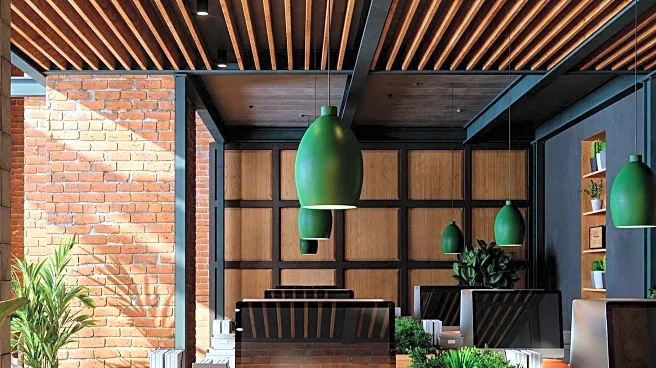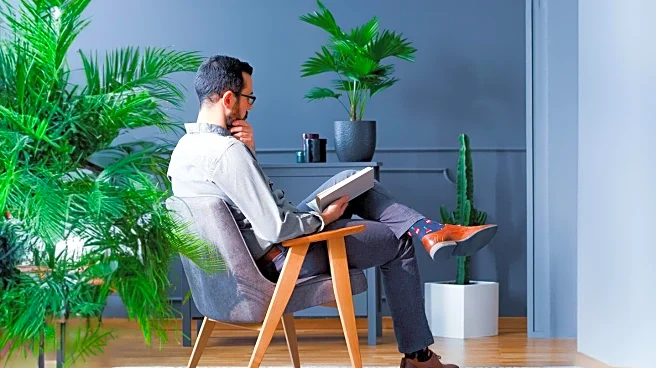What's Happening?
The modern workplace is undergoing a transformation that emphasizes the integration of wellness principles into workspace design. This shift is driven by the recognition of the intrinsic link between environment and well-being. Vista Spaces, led by Managing Director Raghuveer Veeramachaneni, is at the forefront of this movement, advocating for designs that prioritize comfort, focus, and restoration. Key elements include biophilic design, which leverages natural light and materials to improve mood and productivity, and human-centered design, which incorporates ergonomic furniture and adjustable workstations to minimize physical strain. The inclusion of well-being zones, such as quiet rooms and wellness spaces, further supports mental and physical restoration, transforming workplaces into environments that nurture human potential.
Why It's Important?
Integrating self-care into workspace design is crucial for fostering a healthier and more resilient workforce. By prioritizing employee well-being, companies can enhance productivity and reduce the risk of musculoskeletal disorders. The shift from traditional office designs to environments that support human presence and long-term well-being reflects a broader trend in workplace culture. This approach not only benefits employees by improving their quality of life but also supports organizations in achieving higher performance and engagement levels. As professional and personal boundaries continue to blur, creating spaces that accommodate the full spectrum of human life becomes increasingly important.
What's Next?
As organizations continue to embrace wellness-focused design, the next steps involve further integrating these principles into everyday office infrastructure. This includes expanding amenities such as on-site grocery stores, cafés, and child-friendly zones to support work-life balance. Companies may also explore incorporating spa-like facilities and sports zones to enhance recovery and stress relief. The evolution of workspaces into ecosystems that support life beyond traditional working hours is expected to continue, with a focus on creating environments that foster community and connection.
Beyond the Headlines
The shift towards wellness-focused workspace design has deeper implications for organizational culture and employee satisfaction. By prioritizing self-care, companies signal a commitment to empathy and evidence-based strategies that enhance overall well-being. This approach may lead to long-term shifts in how workspaces are perceived, transforming them from sites of mere productivity to living communities that support human potential. The integration of self-care into design is not just a trend but a fundamental change in how workplaces are structured to support the holistic needs of employees.










